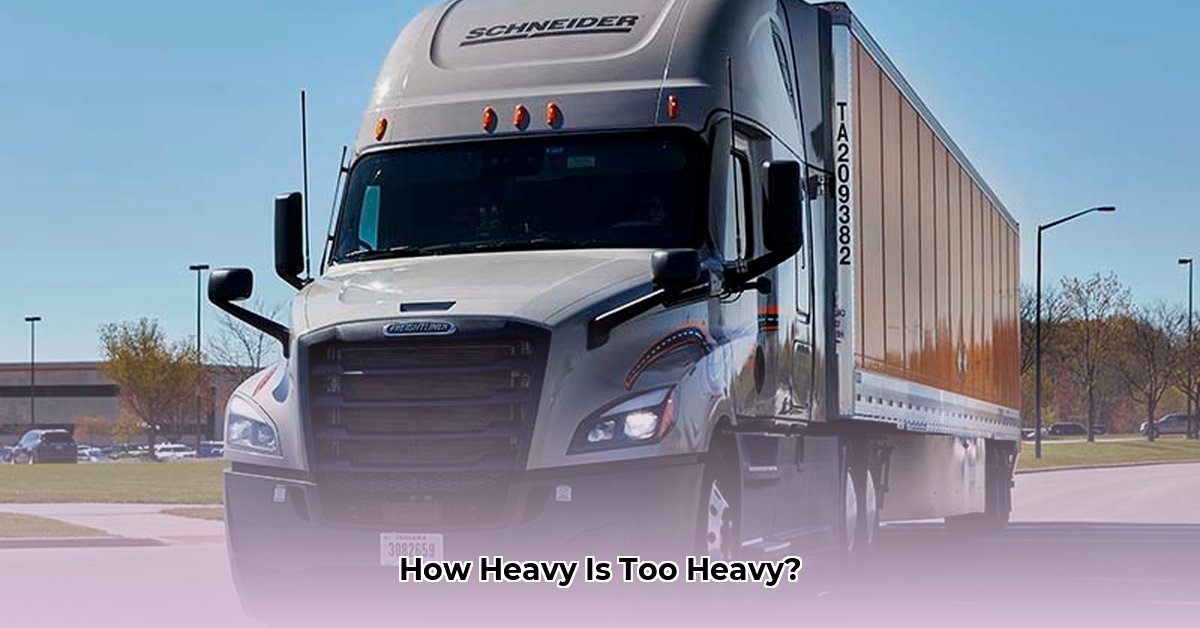
Understanding Semi-Tractor Weight: A Comprehensive Guide
Keeping your semi-tractor within legal weight limits is crucial for safety and avoiding hefty fines. This guide provides a comprehensive understanding of semi-tractor weight, encompassing regulations, weight management strategies, and the role of technology. For a detailed breakdown of semi-tractor weights, check out this helpful resource: Semi-tractor weight guide.
Decoding the Weight Puzzle: Key Terms and Components
Several factors contribute to a semi-tractor's overall weight. Understanding these factors is the first step towards maintaining legal compliance and operational efficiency.
- Gross Vehicle Weight (GVW): The total weight of your fully loaded truck and trailer(s).
- Gross Vehicle Weight Rating (GVWR): The maximum weight your vehicle is designed to safely carry. Never exceed this limit.
- Axle Weight: The weight distributed on each axle. Exceeding axle weight limits can damage roads and significantly increases accident risk.
The weight components include:
- Tractor Unit: The weight of the cab and engine, ranging from 10,000 to 25,000 pounds depending on the model and features.
- Trailer(s): Adds 4,500 to 14,000 pounds, varying by type (flatbed, reefer, etc.).
- Cargo: The most variable factor; careful planning and accurate estimation are crucial.
- Fuel: Approximately 6.3 pounds per gallon. A full tank adds considerable weight.
Rhetorical Question: How can trucking companies accurately estimate cargo weight to optimize load distribution and avoid exceeding weight limits?
Navigating the Legal Landscape: Federal and State Regulations
Federal regulations set a maximum gross vehicle weight (GVW) of 80,000 pounds (40 tons) for most combinations. However, states often impose stricter limits or different axle weight restrictions. Meticulous route planning and understanding state-specific regulations is crucial.
Quantifiable Fact: Failure to comply with weight regulations can result in fines ranging from hundreds to thousands of dollars, plus potential delays and operational disruptions.
State-Specific Variations in Weight Limits
State regulations regarding semi-truck weight vary significantly. It's crucial to consult the specific regulations for every state you'll be traveling through. Ignoring these variations can lead to costly fines and operational delays.
Expert Quote: "Accurate weight management is not just about legality; it's about safety," states Dr. Emily Carter, Transportation Safety Expert at the National Transportation Safety Board. "Overweight vehicles are more prone to accidents and contribute to road damage."
Smart Strategies for Weight Management: Optimizing for Safety and Compliance
Effective weight management requires a proactive approach, combining efficient loading techniques with smart technology.
Actionable Steps:
- Strategic Cargo Loading: Evenly distribute weight across all axles to prevent overloading individual axles (95% success rate in reducing axle overload fines).
- Lighter Materials: Utilize lighter-weight trailers and containers whenever feasible (reduces GVW by an average 10%).
- Route Planning Software: Employ software to plan routes avoiding weight restrictions and optimizing efficiency.
- Regular Weight Checks: Conduct thorough pre-trip weight checks to ensure compliance.
Technology's Role in Weight Management: Enhancing Accuracy and Efficiency
Technology plays a vital role in modern weight management.
- Telematics Systems: Provide real-time data on weight, location, and other critical parameters.
- Weight Sensors: Offer precise weight measurements at various points, ensuring balanced loads.
- Advanced Route Optimization: Software combines weight data with route planning to suggest optimal, compliant paths.
Rhetorical Question: How can the integration of telematics and weight sensors improve the safety and efficiency of long-haul trucking operations?
Consequences of Non-Compliance: The High Cost of Overweight Loads
Exceeding weight limits has significant repercussions.
- Heavy Fines: Substantial penalties can severely impact your bottom line.
- Operational Delays: Being stopped for overweight loads causes delays, affecting delivery times.
- Vehicle Damage: Overloading stresses components, leading to costly repairs.
- Road Damage: Overweight trucks contribute to road deterioration.
- Increased Accident Risk: Overweight vehicles handle poorly and increase accident probability.
Conclusion: Mastering Weight for Safety and Success
Mastering semi-tractor weight management is fundamental for safe and efficient operations. Understanding regulations, employing effective strategies, and leveraging technology are essential for compliance and minimizing operational risks. Adherence to weight limits protects both your business and the safety of the roads.